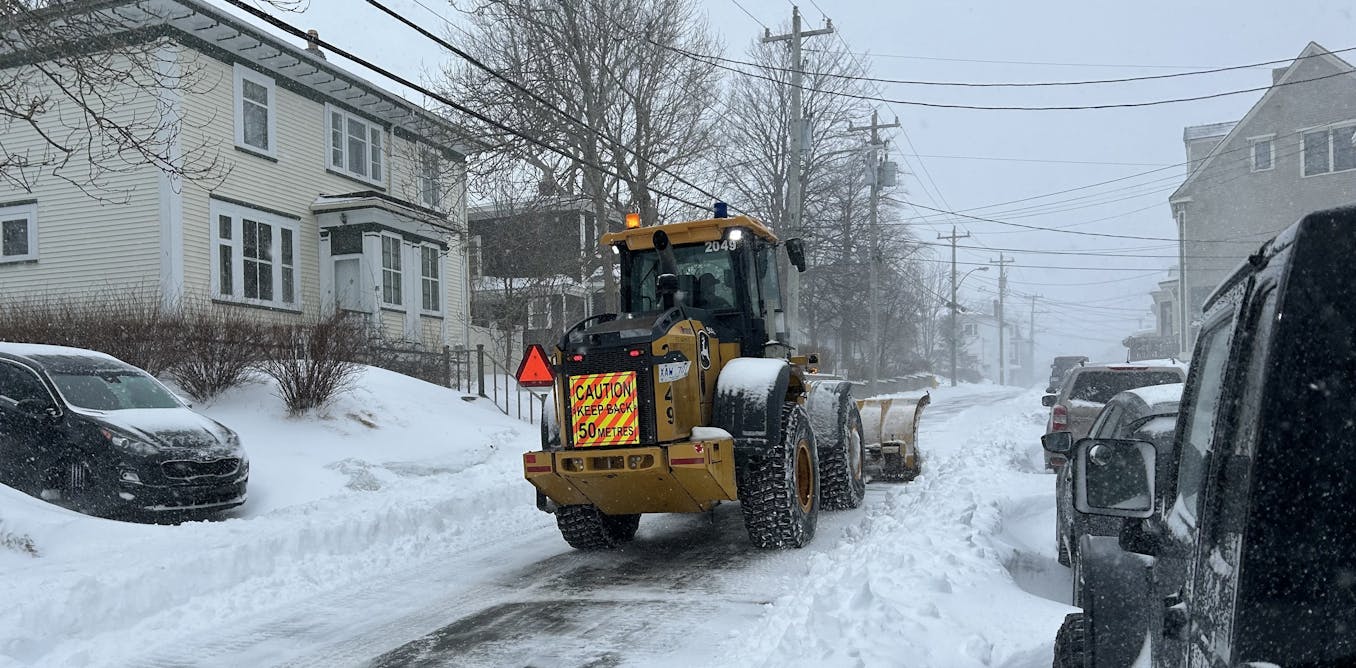Imagine driving along a Canadian road soon after a snowfall — but there’s no snow or ice on the pavement. The salt trucks and plows have not passed. Yet the roads are already clear. The technology exists to make this possible, with a system hidden beneath the pavement.
“[The] system captures solar heat during the summer months and stores it underground. Then, when winter arrives, the stored heat is transferred through pipes beneath the road surface, warming the pavement and preventing ice formation — in essence, a solar powered underfloor heating system,” engineering researchers explain.
Today in The Conversation Canada, Mohammadamin Ahmadfard and Seth Dworkin from Toronto Metropolitan University discuss how this technology, known as Borehole Thermal Energy Storage (BTES), could be a solution to Canada’s winter woes.
“Canada has the potential to lead the way by adopting BTES systems on its most treacherous roads, steep inclines and vulnerable bridges,” they write.
Another added benefit is that it would also make roads lasts longer if water doesn’t have a chance to infiltrate and expand into ice within the asphalt/concrete.
Yeah, it should level out the temperature too, so the minimums are higher and maximums are lower regardless of freeze/thaw.
Kinda seems like a similar idea to the solar heating that Drake Landing in Okotoks Alberta has. Had a heat xfer prof in uni who was really passionate about that project in particular, and this was back in 2007, really don’t know why solar district heating like this doesn’t really seem to have caught on, afaik it works well.
Edit. I’m ootl, apparently that got decommissioned recently which sucks, was a really interesting idea, guess I have my answer as to why they didn’t catch on! It lasted far beyond the 4 year test period and supplied a large amount of the community’s heating needs, it’s cold in the winter in Okotoks so that’s even more impressive to me.
This could save many lives if it works out!
Would much rather have this money invested in light rail for cities because that decreases road accidents year round.
Putting driving lessons into schools would save more lives. This will save insurance companies. Not to mention this will be exponentially more expensive to retrofit roads for this. All new roads should have this installed
It’ll also save our lakes and rivers from becoming salt water instead of fresh. There’s a lot of benefits to this.
Oh yeah, the cost will be the biggest factor. Id love to see it%
I work in road construction. I could maybe see this being feasible in highly localized critical areas, but this kind of road method can’t become commonplace. Canada just has too many roads.
Maybe a bridge along the DVP in Toronto that always has bad ice accidents, or a major bike arterial path, but the numbers don’t make sense for anywhere else. If a road/bridge is truly that bad for accidents, the Municipality is likely cheaper to redesign the approach/descent angles or change the speed limit rather than try this.
I note they don’t talk about how much road a 50 or 60 ton system would be able to serve, compared to the Vancouver budget, or what maintenance costs are on a system that size. The article they link to discussing the system costs is specifically looking at the costs of a BTES system for buildings/complexs.
Solar freakin’ roadways!
I’d be really curious to know how long and cold of a winter they are talking about.
For example: would this work in Saskatchewan or Manitoba where the snow starts falling near Halloween and isn’t gone until May? With regular temperatures below -20C and severe cold snaps below -40C?
We’re part of Canada too.
We’re part of Canada too.
Judging by the national media’s coverage, you’d never know that.
I remember reading somewhere that Oulu, Finland has heated streets that stay perfectly clear and dry all winter. Though it was just a small section of the city and not on any highways or anything.
Oulu’s averages are warmer than Saskatchewan and Manitoba generally speaking. Still not a direct comparison, but I appreciate the info anyway.
They also have a lot of easily accessed geothermal heat.
It might work in regions that have natural thermal vents (such as in the mountains), but I don’t think that’s an option across much of the country.
We have our own system on the west coast and it works by just not getting cold enough. Some years it doesn’t work too well but this year it’s quite successful.







